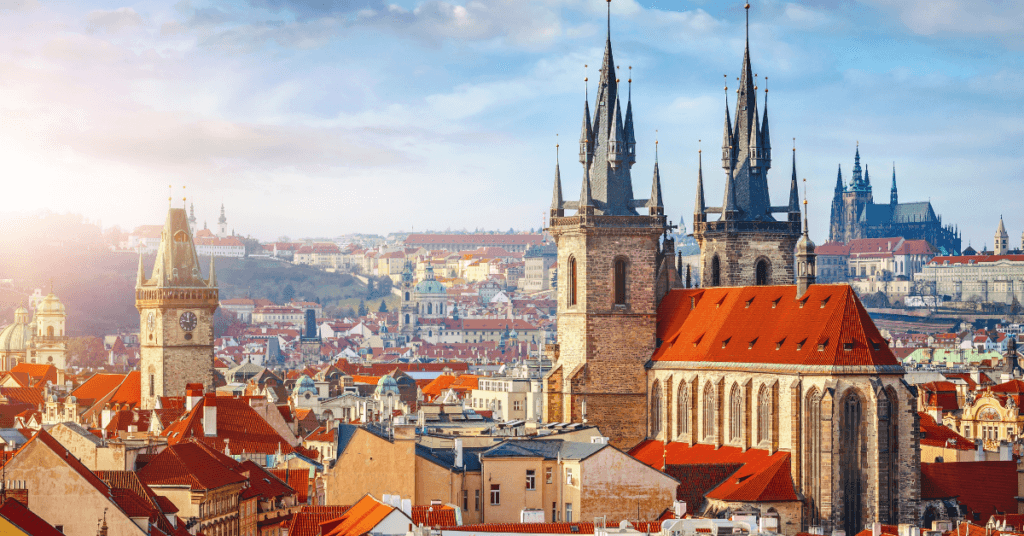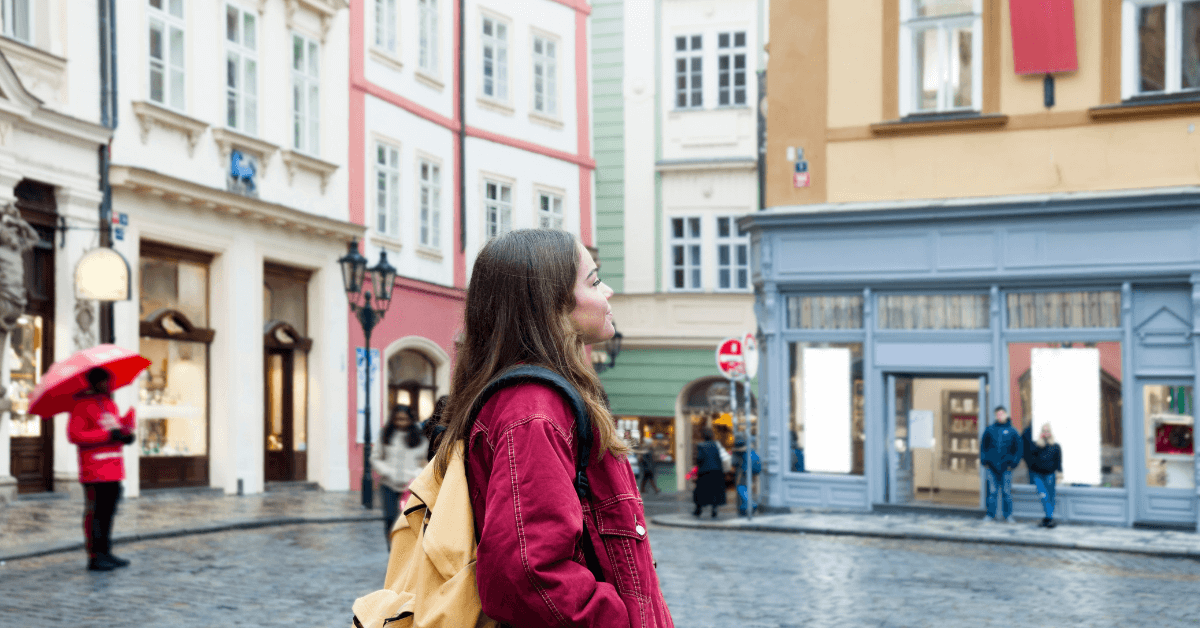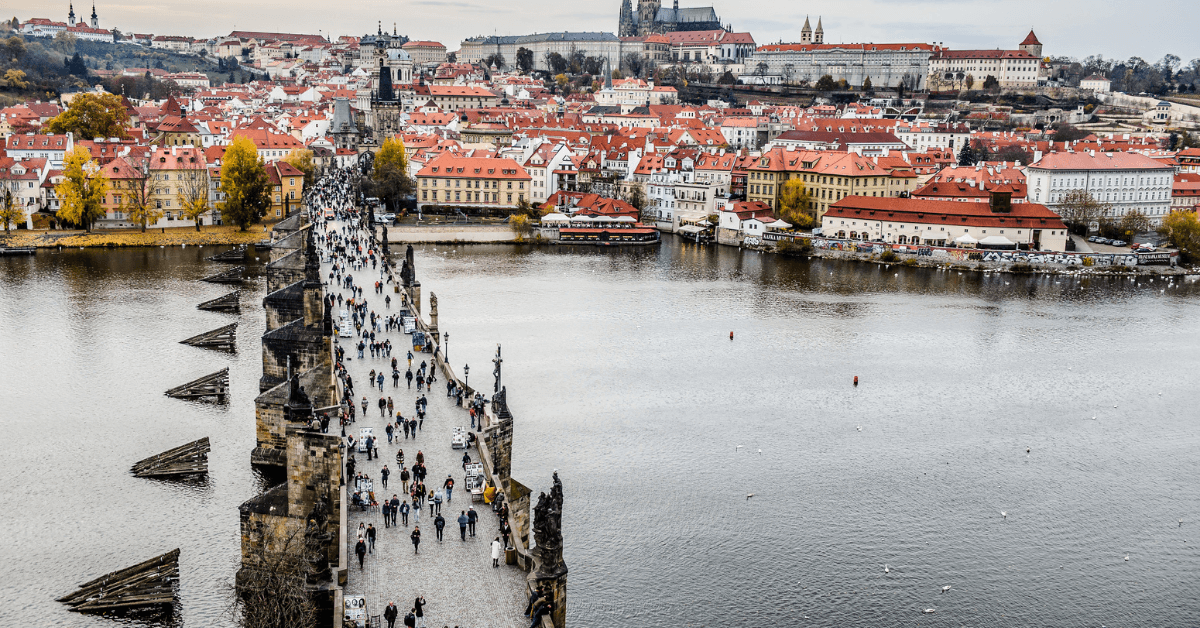
During a recent convening hosted by The Technology and Entrepreneurship Center at Harvard and City Possible, Jana Adamcova, a board member at Prague City Tourism, outlined the city’s approach to revitalizing tourism that was negatively impacted by the pandemic.
Tourism in the Czech Republic is heavily concentrated in the nation’s capital, which devastated Prague’s local economy. As a result, city officials had to work quickly to create programs that drove tourism revenue to the city and simultaneously addressed legacy problems created by over-tourism.
The Evolution of Travel: How Prague Uses Data to Create Innovative Tourism Models | Destination Cities: Accelerating Urban Tourism and Economies Click To TweetWe’ll outline how Adamcova leveraged unique data solutions to evaluate the efficacy of their efforts and inform future decision making, resulting in a more sustainable tourism model.
The Impact of the COVID-19 Pandemic on Prague
The Czech Republic is a popular travel destination in Europe, with an average of 20 million people visiting each year and nearly eight million people traveling to Prague. Before COVID, Prague was one of the world’s most heavily-visited metropolises, ranking sixth in terms of the number of arrivals among European capitals. Overtourism declined during the pandemic, but at the same time, one of the systemic problems of tourism in Prague has become more apparent, namely the strong dependence on foreign clients (the ratio of foreign and domestic visitors has long been at 85% x 15%). This ratio of domestic tourism is one of the lowest amongst popular European destinations. Other cities -such as Paris, that has a history of attracting around 49% domestic tourists each year- have numbers of domestic and foreign tourists much more balanced.
In 2020 compared to 2019, Prague saw a:
- 72.9% overall decline in tourists
- 41% decline in domestic visitors
- 78.6% decline in international visitors
- 82 billion CZK loss in tourism revenue (down 77% from 2019)
- 56,000 full-time jobs lost in the tourism sector (down 74% from 2019)
These insights don’t reflect Prague’s long history of over-tourism. Over-tourism occurs when a travel destination has a regular influx of visitors and is overcrowded, putting a strain on its infrastructure and resources. The load on the metropolis was high: the density of tourism (the share of overnight stays of tourists per square kilometre) was one of the highest in Europe and there was a concentration of tourists in a much smaller area than in other European capitals such as London, Berlin, and Paris. While the pandemic reduced the number of people who came to Prague, it highlighted legacy challenges that stemmed from the long history of the city’s over-tourism.
City officials looked to improve:
- Lack of city branding and underdevelopment of city image
- Low satisfaction of tourists with the quality of services offered – such as the approach of the staff of Prague’s monuments, hotels, restaurants, and other services to clients, long queues in front of main Prague´s attraction, activities of non-certified guides, low hospitality satisfaction, etc.
- Low amount of cultivated products and services offered – e.g. merchandising made in China referring to Russian motifs, and activities of non-certified guides.
Leveraging Mastercard Tourism Insights, Adamcova was able to determine that visitors had a low amount of satisfaction regarding the variety of services being offered by the city. With fewer tourists in the city, there was more pressure to improve the quality of attractions being provided and an enhanced focus on customer service and improving consumer choice.
Development of Tourism Data Collection Tool
To inform future tourism strategies with data, Prague developed VISITIS, a software program for dynamic tourism management. VISITIS is a smart visitor tool created to collect, analyze, and evaluate data in the tourism sector. The program stemmed from the limitations of General Data Protection Regulation (GDPR), which prohibited leaders from popular European cities from accessing information on where and how often people visit travel destinations.
With this tool, other cities can participate and share data in order to increase understanding of tourists’ behavior in the destination and to further coordinate the process of dynamic management of the tourism flow. At this time, all of the cities in the Czech Republic have access to VISITIS at no charge. The primary goal of having a bigger data collection tool is to develop new products and services that serve tourists, city residents, and the local community, while also ensuring that negative impact of tourism- such as overcrowding in the city center – is minimized. Smart tools and innovations should serve people, creating a seamless travel experience.
Creating Added Value for Tourists With “At Home in Prague”
One of the most successful initiatives implemented by Prague in 2020 was “At Home in Prague.” As discussed in a previous blog article, this program provided hotel guests with free admission to participating city attractions. “At Home in Prague” was extended to this summer as it boosted Prague’s economy by over 200 million CZK in 2020.
City officials leveraged tourism data insights to understand the impact of the program on the city’s tourism sector. With this tool, they were able to analyze the following items:
- Which hotels were most popular and average length of stay
- Which attractions were visited and how often
- The zoo, Prague castle, and Petřín lookout tower were the most popular attractions
In 2020, 434 hotels participated, 60 attractions were visited, and almost 74,000 visitors utilized the program. The chamber of commerce, hotels, attractions, and restaurants were able to work closely together to analyze the data and leverage learnings to adjust the program for future initiatives.
Long Term Initiatives Focused on Cultural Sustainability
With many popular city attractions remaining unoccupied due to the pandemic, Adamcova and other city officials focused on cultivating local cultural initiatives that highlighted the unique Czech heritage. The city wanted to highlight the free and creative lifestyle that Prague embodies by showcasing creators and their unique products to cultivate a sense of community that also brings added value to those visiting the city.
Collaborating with local artists and artisans, the city created high-quality souvenirs for tourists to purchase. They also developed new printed materials in conjunction with local illustrators to pass out to children visiting the city. These strategies developed a unique brand and story for the city to tell while giving local creators an avenue to advertise their work.
The Future of Tourism in Prague
As people begin traveling both domestically and internationally again, it is vital for cities to implement a new standard for health and hygiene throughout the city. Leveraging data solutions, Prague is able to evaluate how each of its initiatives is performing and use those insights to improve or expand programs to further develop interest from travelers.
In the next few weeks, we’ll be sharing more insights from experts from the virtual convening. We hope to bring innovative solutions and strategies to cities around the globe.
If you missed the event, you can watch the replay of the event on the City Innovators website. To learn more about how cities are leveraging data insights to build a more inclusive and sustainable tourism economy, contact Rita Okcuoglu, Director of City Possible Partnerships, at rita.okcuoglu@mastercard.com or visit www.citypossible.com.
Co-authored by Dr. David Ricketts, Innovation Fellow, the Technology and Entrepreneurship Center at Harvard and Jana Adamcová, Board Member, Prague City Tourism
The partnership between City Possible and the Technology and Entrepreneurship Center at Harvard aims to bring innovative solutions and strategies to cities around the globe. Check City Possible for upcoming events




